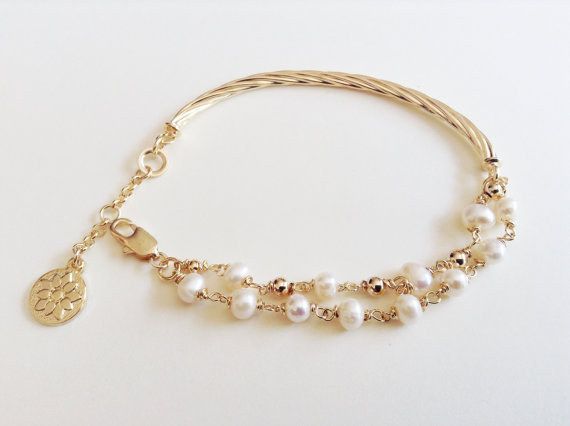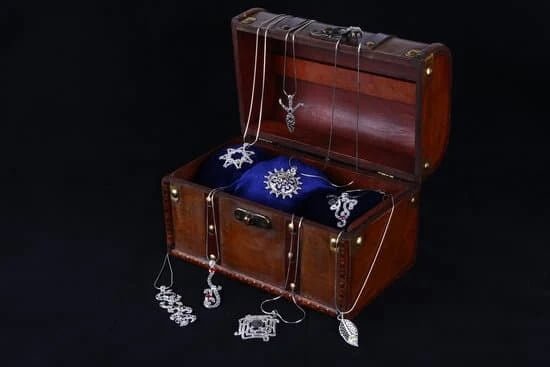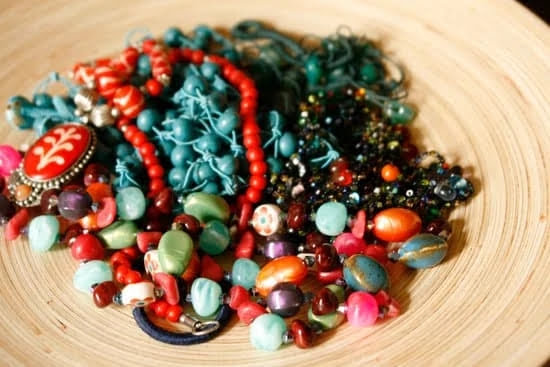Handmade jewelry is a labor of love, often requiring meticulous attention to detail and craftsmanship. However, one common concern for both jewelry makers and wearers is the presence of glue in the pieces. Knowing how to remove glue from handmade jewelry is essential for maintaining the integrity and beauty of these unique creations. Whether it’s excess adhesive from the assembly process or old glue that needs to be replaced, understanding the proper removal techniques is crucial.
The types of glue used in handmade jewelry vary, with adhesives like E6000, super glue, and resin being commonly utilized. Each type presents its own challenges when it comes to removal, making it imperative to have a thorough understanding of the process. Additionally, certain materials may require specific precautions and techniques to avoid damage during glue removal.
In this comprehensive guide, we will explore the different types of adhesive used in handmade jewelry, as well as provide a step-by-step approach to safely removing glue from various materials such as delicate gemstones, metal components, and beads. Additionally, we will discuss important tools and supplies needed for effective glue removal, along with aftercare tips to ensure that your handmade jewelry remains in pristine condition.
Types of Glue Used in Handmade Jewelry
When it comes to creating handmade jewelry, the type of adhesive used plays a critical role in the overall quality and durability of the piece. There are several types of glue commonly used in handmade jewelry, each with its own unique properties and applications. Understanding the characteristics of these adhesives is essential for both jewelry makers and wearers, especially when it comes to removing excess or unwanted glue from the finished piece.
E6000
E6000 is a popular choice among jewelry makers for its strong bonding capabilities and flexibility once cured. It is commonly used for attaching metal components, gemstones, and even fabric elements in jewelry making. However, removing excess E6000 can be challenging due to its resilient nature.
Super Glue
Super glue, also known as cyanoacrylate adhesive, is widely utilized in handmade jewelry for its fast-drying and durable bond. It is often used for securing small components such as beads and findings. When removing super glue from handmade jewelry, care must be taken to avoid damaging delicate materials.
Resin
Epoxy resin is another popular adhesive used in handmade jewelry for creating beautiful resin-based designs. While resin provides a clear and glossy finish, it can also be tricky to remove if not applied correctly or if excess spillage occurs during the crafting process.
Understanding the properties and characteristics of each type of adhesive commonly used in handmade jewelry is crucial in knowing how to remove glue from handmade jewelry effectively without causing damage. Each type requires specific removal techniques and precautions to ensure the integrity of the finished piece while maintaining its aesthetic appeal.
It’s important for both jewelry makers and wearers to familiarize themselves with proper glue removal methods to preserve the quality and appearance of their cherished handmade pieces. By understanding the different types of adhesives commonly used in handmade jewelry and how to safely remove them when necessary, individuals can ensure that their favorite pieces remain beautiful and well-maintained for years to come.
Tools and Supplies Needed
When it comes to removing glue from handmade jewelry, having the right tools and supplies can make the process much more manageable. Here is a comprehensive list of materials and tools that you will need to effectively remove glue from your precious jewelry pieces:
- Cotton swabs: These are essential for applying solvents such as acetone or rubbing alcohol to the glued areas of the jewelry.
- Acetone: A powerful solvent that can effectively dissolve many types of adhesive, including super glue and resin.
- Fine-tipped tweezers: These precision tools are perfect for gently loosening and removing any excess glue from intricate parts of the jewelry without causing damage.
- Rubbing alcohol: An alternative to acetone, rubbing alcohol can also be used to soften and remove certain types of glue without harming the jewelry materials.
- Toothpicks: Useful for scraping away softened glue from small crevices or hard-to-reach areas on the jewelry.
It’s important to note that different types of adhesives may require different removal methods and solvents. For example, while acetone is effective for removing super glue, it may not be suitable for all types of gemstones or metal finishes. Therefore, always research the appropriate solvent for your specific type of glue and jewelry material before attempting removal.
Additionally, remember to work in a well-ventilated area when using strong solvents such as acetone, and wear protective gloves to prevent skin irritation. With these tools and supplies at your disposal, you’ll be well-equipped to tackle the task of removing unwanted glue from your handmade jewelry pieces with confidence.
Finally, remember that patience is key when removing glue from delicate jewelry items. Take your time and work carefully to avoid causing any damage during the removal process.
Step-by-Step Guide
Removing glue from handmade jewelry requires careful attention and precision to avoid damaging the materials. Whether it’s delicate gemstones, metal, or beads, each type of jewelry requires a specific approach to effectively remove glue without causing harm. Here’s a step-by-step guide on how to safely remove glue from different types of handmade jewelry:
1. Assess the Type of Glue Used: Before attempting to remove the glue, it’s important to identify the type of adhesive used in the jewelry making process. This will determine which removal method is most suitable for the specific type of glue.
2. Gather Your Supplies: Depending on the type of glue and material of the jewelry, you’ll need different tools and supplies. Gather cotton swabs, acetone, fine-tipped tweezers, and a soft cloth to aid in the removal process.
3. Test a Small Area: Start by testing the chosen adhesive remover or solvent on a small, inconspicuous area of the jewelry to ensure that it does not cause any damage or discoloration.
4. Apply Adhesive Remover: Using a cotton swab or soft cloth, carefully apply a small amount of acetone or specialized adhesive remover to the glued area.
5. Gently Remove Glue: Use fine-tipped tweezers or a soft cloth to gently scrape or rub away the softened glue. Be cautious not to apply too much pressure, especially when working with delicate gemstones or beads.
6. Clean and Dry: Once all the glue has been successfully removed, clean the jewelry with a mild soap and water solution to remove any residue from the adhesive remover. Dry it thoroughly before storing or wearing.
By following these steps and adapting them for different types of handmade jewelry, you can effectively remove glue without compromising its quality and appearance.
Tips for Success
When it comes to removing glue from handmade jewelry, it’s essential to approach the process with care and attention to detail. Whether you’re dealing with delicate gemstones, metal, or beads, there are several tips and tricks that can help you successfully remove glue without causing damage to the materials or components.
One useful tip for removing glue from handmade jewelry is to use acetone as a solvent. Acetone is effective at breaking down and dissolving many types of adhesives, making it a valuable tool for glue removal.
However, it’s important to exercise caution when using acetone, as it can also damage certain materials such as pearls or soft gemstones. Always test a small, inconspicuous area of the jewelry first to ensure that the acetone will not cause harm before proceeding with the glue removal process.
Another helpful tip is to use fine-tipped tweezers or cotton swabs to carefully apply the solvent to the glued areas of the jewelry. This precision allows you to target the adhesive without affecting surrounding materials. Additionally, using gentle pressure and taking your time during the removal process can help minimize the risk of causing unintended damage.
It’s also important to consider the type of adhesive used in the jewelry piece when planning your removal strategy. For example, super glue may require a different approach than resin or E6000 adhesive. By understanding the specific properties of each type of glue and how they interact with different materials, you can tailor your removal technique for optimal results.
| Tip | Useful Information |
|---|---|
| Acetone as a solvent | Effective at breaking down and dissolving many types of adhesives |
| Fine-tipped tweezers and cotton swabs | Precision application helps target adhesive without affecting surrounding materials |
| Type of adhesive | Understanding specific properties allows tailored removal technique for optimal results |
Precautions and Safety Measures
When working with glue removal techniques, it’s important to prioritize safety at all times. Whether you’re a jewelry maker or a wearer looking to remove unwanted adhesive from your favorite piece, taking the necessary precautions can prevent accidents and protect your health. Proper ventilation is crucial when dealing with strong solvents and adhesives, as inhaling fumes can be harmful. Additionally, wearing protective gear such as gloves and goggles can safeguard against skin irritation and eye exposure.
One of the most commonly used substances for removing glue from handmade jewelry is acetone, which is known for its strong odor and potentially irritating effects. To minimize the risk of inhalation, it’s essential to work in a well-ventilated area. This could mean setting up near an open window or using a fan to circulate air. If working outdoors is an option, that would be even better as it allows for maximum airflow.
In addition to proper ventilation, wearing protective gear is a crucial safety measure when using acetone or other chemical solvents. Gloves should always be worn to prevent direct skin contact with the solvent, which can cause dryness, irritation, or chemical burns. Goggles or safety glasses are also recommended to shield the eyes from splashes or accidental contact with the solvent.
| Precautions | Safety Measures |
|---|---|
| Proper ventilation | Working in well-ventilated area |
| Protective gear | Wearing gloves and goggles |
Aftercare
After successfully removing glue from handmade jewelry, it’s important to take the necessary steps to clean and care for the jewelry to ensure it remains in pristine condition. Proper aftercare can help maintain the quality and appearance of the jewelry, extending its lifespan and keeping it looking beautiful for years to come.
Cleaning Process
Once the glue has been removed from the handmade jewelry, it’s essential to thoroughly clean the piece to remove any residue or leftover adhesive. Using a mild soap and warm water, gently clean the jewelry with a soft brush or cloth to remove any traces of glue or cleaning solution. Be sure to rinse the jewelry thoroughly and dry it completely before storing or wearing it.
Inspecting for Damage
After removing the glue and cleaning the handmade jewelry, carefully inspect the piece for any potential damage caused by the adhesive removal process. Check for loose gemstones, scratches, or discolored areas. If any damage is found, consider taking the jewelry to a professional jeweler for repairs or restoration.
Storage and Maintenance
Proper storage and maintenance are crucial for preserving handmade jewelry after removing glue. Store the cleaned and dried jewelry in a soft pouch or lined box to prevent scratches and protect it from dust and moisture. Avoid exposing the jewelry to harsh chemicals, extreme temperatures, or direct sunlight, as these can damage delicate materials over time.
By following these aftercare guidelines, you can ensure that your handmade jewelry remains in excellent condition after removing glue. Taking these extra steps will help preserve the beauty and integrity of your precious pieces, allowing you to enjoy them for years to come.
Conclusion
In conclusion, knowing how to remove glue from handmade jewelry is essential for both jewelry makers and wearers. By understanding the different types of adhesives used in handmade jewelry and having the necessary tools and supplies on hand, it is possible to safely and effectively remove glue without causing damage to the materials or components.
Following a step-by-step guide and implementing useful tips for success can ensure that the process is carried out smoothly, resulting in pristine, beautiful jewelry.
Taking the time to follow proper precautions and safety measures when working with glue removal techniques is crucial for protecting your health and well-being. Ventilation and protective gear should be utilized to prevent inhaling harmful fumes or coming into direct contact with chemicals. Additionally, providing aftercare for the jewelry after the glue has been removed will help maintain its quality and appearance, ensuring that it continues to bring joy and beauty for years to come.
Ultimately, mastering the art of removing glue from handmade jewelry not only preserves the integrity of each piece but also allows for creativity and customization by enabling old pieces to be repurposed or reimagined. By incorporating these techniques into your jewelry-making repertoire, you can enhance the longevity and appeal of your creations, delighting both yourself as a maker and those who adorn themselves with your handcrafted treasures.
Frequently Asked Questions
How Do You Remove Glue From Jewelry?
To remove glue from jewelry, start by soaking the piece in warm, soapy water. Gently scrub the affected area with a soft-bristled toothbrush to loosen the glue. If this doesn’t work, try using a small amount of nail polish remover on a cotton swab to dissolve the glue.
How Do You Get Residue Off Jewelry?
Getting residue off jewelry can be done using simple household items. Try applying a mixture of equal parts water and vinegar to the affected area and gently scrubbing with a soft cloth or toothbrush. Another method is to use rubbing alcohol or acetone on a cotton swab, being careful not to damage any gemstones or metal.
Does Acetone Remove Jewelry Glue?
Yes, acetone can be used to remove jewelry glue, but it should be used with caution. Acetone can dissolve many types of glues, but it can also damage certain materials such as pearls or some gemstones. It’s best to test a small, hidden area of the jewelry first before applying acetone to the entire affected area.

Welcome to my jewelry blog! My name is Sarah and I am the owner of this blog.
I love making jewelry and sharing my creations with others.
So whether you’re someone who loves wearing jewelry yourself or simply enjoys learning about it, be sure to check out my blog for insightful posts on everything related to this exciting topic!





